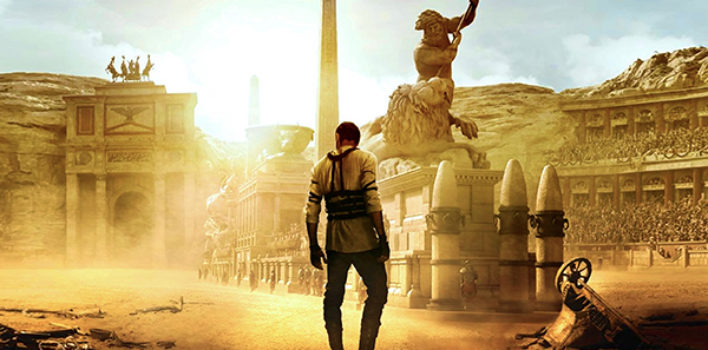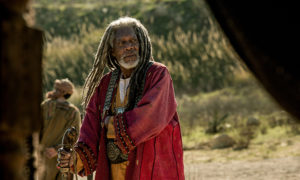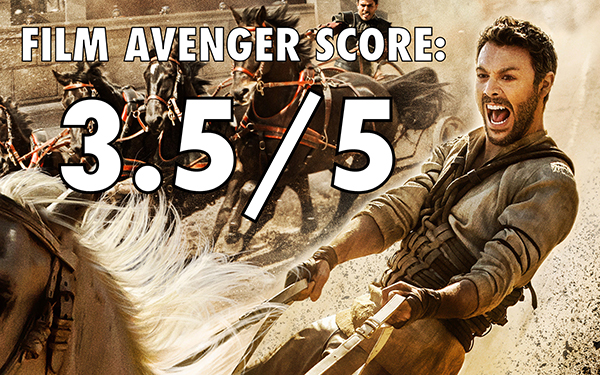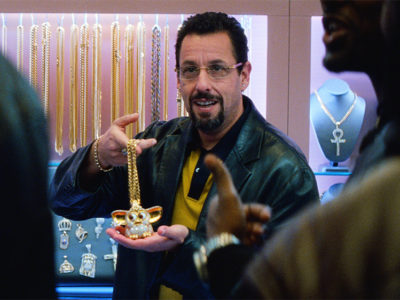Review| Ben-Hur (2016)
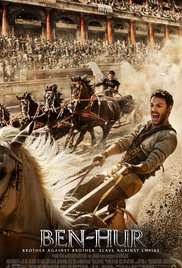 More often than not, remaking a movie is an odd proposition. No matter what one does, there will always be the inevitable comparison to the original film – good or bad. It’s even more daunting when the remake is of an established classic and considered one of the greatest movies of all time. So it is true with the new remake of Ben-Hur. The shadow of the 1959 film, which starred the legendary Charlton Heston, is all over this new take before one frame of film is shot.
More often than not, remaking a movie is an odd proposition. No matter what one does, there will always be the inevitable comparison to the original film – good or bad. It’s even more daunting when the remake is of an established classic and considered one of the greatest movies of all time. So it is true with the new remake of Ben-Hur. The shadow of the 1959 film, which starred the legendary Charlton Heston, is all over this new take before one frame of film is shot.
From the moment I heard about this remake, I thought it was an odd idea. Ben-Hur is not just any film. While it does have its flaws, it is a monstrous epic filled with iconic images and profound ideas. Then I heard about the people involved, specifically executive producers Mark Burnett and Roma Downey – the husband/wife team that brought The Bible and A.D. miniseries to TV and Son of God to the big screen. Not exactly comparable experience to take on William Wyler’s epic. That and the man picked to helm the project, Timur Bekmambetov, didn’t exactly thrill me, given that his body of mainstream work has never really sparked any interest at all in me (Abraham Lincoln: Vampire Hunter and Wanted).
However, much to my surprise, I enjoyed this take on Ben-Hur. This is a completely different take on the material stylistically, and that’s okay. It’s a 21st century version of the story – more gritty and realistic that previous incarnations, and visually appealing to today’s mainstream audiences. There is very little of the schmaltz and unprofessionalism found in the other “Christian” cinema to which the filmmakers are attached, following in the same vein as last year’s Captive and this year’s Risen.
It’s not entirely fair to compare the 2016 and 1959 versions of Ben-Hur. They are different films made for different eras. Still, this film does fill in some of the holes that have always bothered me about the 1959 film (I’ll wait a moment for everyone to fall out of their seat in shock). I both like and dislike the two films for very different reasons.
The story of Ben-Hur is one of the most famous pieces of Biblical fiction. Jesus is not the main character, but His words and philosophy form the backbone of the narrative, providing a wonderful parallel parable for His teachings. It reflects Jesus’ most basic command – to love one another and forgive those who have wronged us.
SPOILIERS AHEAD!
Director Timur Bekmambetov has crafted a very visually interesting world in Ben-Hur. At the risk of sounding cliché, it’s a darker, grittier (and at times bloodier) take on the material. The sand and mud gets everywhere, and no one is immune, even Jesus. It feels lived-in much more than the Judea of the 1959 Ben-Hur, where everything seemed like it was freshly-built.
I felt there was more represented visually in the relationships with the characters in this film. Rather than listening to Judah and Messala reminisce about their adventures and activities as adopted brothers, we the audience actually got to see it – the camaraderie and genuine affection – before things went south, leading to a more emotionally impactful rift between the two men.
Messala, played wonderfully by Toby Kebbell, was also given more dimension, which I appreciated. There was a twinge of regret and sympathy on his part toward Judah and his situation. Messala was a voice of reason in the Roman ranks, before power and ambition corrupt him to betrayal and hate.
As always, Morgan Freeman was amazing. It seems no matter what he does or what he’s in, he’s just great. Even a stinker like Luc Besson’s Lucy, where he was literally there to just spout exposition, benefitted from his presence. Here he played the shrewd sheik that had Judah race chariots for him. As with Messala, there is more screen time spent between Judah and Sheik Ilderim that builds up their relationship, as well as Ilderim’s instruction of Judah in the art of charioteering.
The chariot race sequence was very exciting and well-executed. Again, it’s unfair to compare the scenes in the 1959 and 2016 because of time, sensibilities and the evolution of visual effects. I loved the interesting angles Bekmambetov chose to shoot from, such as below Judah being dragged by his chariot, with Messala’s horses closing in from behind. It was harrowing and magnificent. The violence was also more visceral and added to the danger element.
Bekmambetov cleverly found a way to make this grand, epic story feel very personal and intimate visually. Scenes and sequences have very few long shots. Even something as epic as the sea battle is completely from Judah’s point of view. It’s cramped and confusing, but that’s by design. Neither Judah nor the audience knows what’s going on outside the ship’s galley until Judah sees it through the oar-holes or the grates. It was a very interesting way to tell the story.
This film has a better ending than the 1959 Ben-Hur. What always bothered by about Wyler’s film more than anything is that the story just ended with the crucifixion, his mother and sister’s miraculous healing, and Judah’s redemption. There was not epilogue or resolution for any other character or story arc, which left me wanting. In this version, we finally get resolution – and a good one that is in tune with the spiritual side of the narrative: Judah and Messala embraced as brothers and reconciled.
Stuff I Didn’t Like
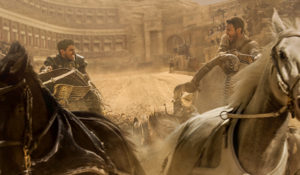 This is probably the up-teenth time I have mentioned this in one of my reviews, but it does continue to be a problem in modern film that I can’t seem to ignore. Timur Bekmambetov loves the shaky-cam almost as much as his contemporaries, and it’s so distracting sometimes – especially in quiet character scenes. Those kinds of scenes don’t require the camera to shake frenetically because there is no real action going on. The shaky camera work used in the chariot race was warranted and amazing because it added to the sheer chaos of the scene.
This is probably the up-teenth time I have mentioned this in one of my reviews, but it does continue to be a problem in modern film that I can’t seem to ignore. Timur Bekmambetov loves the shaky-cam almost as much as his contemporaries, and it’s so distracting sometimes – especially in quiet character scenes. Those kinds of scenes don’t require the camera to shake frenetically because there is no real action going on. The shaky camera work used in the chariot race was warranted and amazing because it added to the sheer chaos of the scene.
It’s a small thing that doesn’t really matter in the narrative itself, but Morgan Freeman looked ridiculous in dreadlocks, especially when considering the character he was playing and the time in which the story took place. I must admit that my knowledge of first-century sheiks and their dress customs is scarce, but it just felt out of place – a bit too modern for the period. When he was wearing the head coverings, he looked great. But the dreads were just too much.
I questioned the new incident that prompted Judah’s imprisonment. In both the original novel and the 1959 film, it was simply an accident; some roof tiles came loose and knocked the Roman governor off his horse. In the new film, it was a real attempt on the governor’s (who is actually Pontius Pilate in this version) life, with a zealot leveling a bow from the roof of the House of Hur.
This changes the rift between Messala and Judah completely, and changed the complete innocence of Judah and his family. There is a huge difference between an accident and a deliberate attempt on a life. While this version makes Messala a more sympathetic character, it does water down the betrayal a bit, making Messala someone just following orders and not really acting out of selfish spite as much as in the 1959 film. There’s a sense of responsibility on Judah’s part, as he allowed the zealot to stay at his home. His blind hatred for Messala and lust for revenge and is more difficult to believe given Judah’s responsibility for his own circumstances. This plot change didn’t seem necessary.
Rodrigo Santoro was not a good fit to portray Jesus. Did he look like Jesus? Absolutely. However, Santoro’s characterization was odd, and sometimes off-putting. Perhaps it was the fault of the screenwriter or the director, but whenever Jesus was on screen, He sort of stared wistfully at people and seemed lost. I liked that Jesus was just as dirty, sweaty and dusty as everyone else (which is what He would have been; too many times, even in the 1959 Ben-Hur, Jesus is immaculately dressed and styled, no matter where He is). But the way Santoro portrays Him is not very compelling.
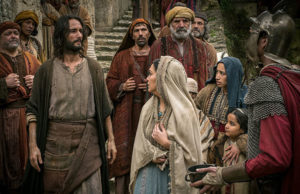 Contrast Santoro’s portrayal of Jesus to that of Cliff Curtis in Risen from earlier this year. Curtis was an approachable, charismatic Jesus with real presence and authority. Like Santoro, He was also in the midst of the dirt and grime. Curtis also had a very good look, and his gaze was mesmerizing. I just think Curtis’ Jesus better represented the actual Jesus’ personality and teachings, especially to non-believers watching the film.
Contrast Santoro’s portrayal of Jesus to that of Cliff Curtis in Risen from earlier this year. Curtis was an approachable, charismatic Jesus with real presence and authority. Like Santoro, He was also in the midst of the dirt and grime. Curtis also had a very good look, and his gaze was mesmerizing. I just think Curtis’ Jesus better represented the actual Jesus’ personality and teachings, especially to non-believers watching the film.
On top of all this, the actual Jesus scenes in Ben-Hur were rushed, and I think it did a disservice to people who don’t know the story of the crucifixion. If one already knows the story, they could kind of piece things together. For example, there was a scene where Judah and Esther reunited amidst the crowd carrying palm fronds, no doubt heading to the city limits to welcome Jesus to Jerusalem. A nice touch to be sure, but it is never addressed by either character, not did the audience see the result.
The new Ben-Hur also repeats a flaw of most of the recent cinematic tellings of Jesus crucifixion and resurrection. Even the 1959 Ben-Hur is guilty of this. All the focus is on the crucifixion, but very little attention is paid to the resurrection – which is really the most important aspect of the event. The 1959 Ben-Hur simply ends at the death of Christ, and I always felt there was at least another 20 to 30 minutes of story after that would have resolved some loose ends, especially when it came to Judah believing in Jesus.
Ben-Hur does indeed have a better ending more in line with the thematic core of the narrative, but there was definitely a missed opportunity to portray the Resurrection in a profound way. For example, at the end of the film, when Judah, his family and Sheik Ilderim are riding away from Jerusalem to a new life, Judah could have encountered the resurrected Jesus on the road, and Jesus could have said something like, “I will always be with you, Judah.” At the very least, Jesus could have been on one of the hills as Judah looked back, smiling.
The rushed Jesus scenes are indicative of a pattern in the film itself. Though it succeeded in bringing more heft to the character relationships, there was a lot missing from this version of Ben-Hur – no doubt for the sake of running time. The entire subplot of Judah saving the Roman governor from the ship battle, and Judah thereby becoming a Roman citizen and heir of the governor’s, had been completely excised. It’s true that this sequence of events isn’t truly necessary for the main narrative to be understood, but it added more layers of irony to the story. Not only had Judah returned from the torture of the galleys, but he was now a Roman citizen – a sort of equal to Messala, which probably drove Messala mad with rage.
Stuff to Ponder
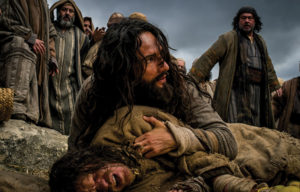 Originally published as the novel Ben-Hur: A Tale of the Christ by Lew Wallace in 1880, the story of the Jewish nobleman Judah Ben-Hur has been a compelling narrative since it first came on the public sphere. In fact, by the turn of the 20th century, Ben-Hur was the best-selling fiction book in America – surpassing Harriet Beecher Stowe’s classic, Uncle Tom’s Cabin. Ben-Hur would hold that position until Margaret Mitchell’s Gone with the Wind was released in 1936.
Originally published as the novel Ben-Hur: A Tale of the Christ by Lew Wallace in 1880, the story of the Jewish nobleman Judah Ben-Hur has been a compelling narrative since it first came on the public sphere. In fact, by the turn of the 20th century, Ben-Hur was the best-selling fiction book in America – surpassing Harriet Beecher Stowe’s classic, Uncle Tom’s Cabin. Ben-Hur would hold that position until Margaret Mitchell’s Gone with the Wind was released in 1936.
The story of Ben-Hur is appealing because it is relatable. This is a story of betrayal, forgiveness and reconciliation – all of which we understand. These themes are also at the core of what Jesus taught. It’s as if one of Jesus’ parables was happening at the same time as His ministry, which is an interesting concept.
As the story begins, Judah Ben-Hur was a comfortable man who shied away from violence. But when he was sent to the galleys by his Roman “brother” Messala, Judah’s heart became filled with rage, and thirsted for revenge. He said it was the only thing that kept him alive in his years of bondage. When he returned to Jerusalem with vengeance in his mind, Judah’s wife Esther cannot bear to be near him anymore, as the hate has consumed him.
The chariot race was where everything came to a head. Judah wanted revenge on Messala and Messala wanted to kill Judah for prideful reasons. When the race was over and the dust had settled, Judah was indeed the winner of the mayhem in the circus, but he was not satisfied or made whole again. He looked on the unconscious body of Messala being carried off by the crowd with a great deal of guilt and shame.
The chariot race is a great analogy for revenge. It may feel good in the moment, but it goes nowhere. The result, while an earthly victory, is counterproductive and ends with people getting hurt. Without reconciliation, there is no end to the cycle of pride and revenge.
“Jesus said, ‘Father, forgive them, for they do not know what they are doing.'” Luke 23:34
After Judah witnessed the death of Jesus, and understood that Jesus had died to forgive all sins for all people, he collapsed to his knees. When he went to reconcile with his broken brother, Messala was filled with hate and wanted to kill Judah. It was not until Judah forgave Messala that the two brothers embrace and reconcile.
“You have heard it said ‘Love your neighbor and hate your enemy.’ But I tell you, love your enemies and pray for those who persecute you, that you may be children of your Father in heaven.” Matthew 5:43 & 44
All of Jesus’ teachings are based on compassion and forgiveness. We all have people in our lives we need to forgive. Sometimes our pride gets in the way, other times it’s a selfish need to be right. Perhaps your feelings are justified. But as Jesus said, love is the only thing that will break the cycle of sin and violence. It is why He went to the cross – to reconcile us with our Father in heaven. If God Almighty, who is completely justified to let us rot in our sin, loves us enough to forgive our trespasses against Him, surely we can do the same for our neighbors and enemies.
So What I’m Trying to Say is
The new interpretation of Ben-Hur is deserving of praise. It takes quite a bit of bravery to be willing to remake a film that has so much of legacy attached to it. This new take on this revered story is entertaining, exciting and still very thought-provoking. While it may be rushed in some places, Jesus’ presence is thankfully still a big part of the story.
The story of Judah Ben-Hur is a very relatable one. Being human, we can sometimes give into our lust for vengeance against those who have wronged us. Jesus teaches a better way – a way out of the endless cycle of hatred and into real healing and true freedom. All He asks is that we believe in Him, love God with all our heart, and love our neighbor as ourselves – forgiving endlessly, just as God has forgiven us.


